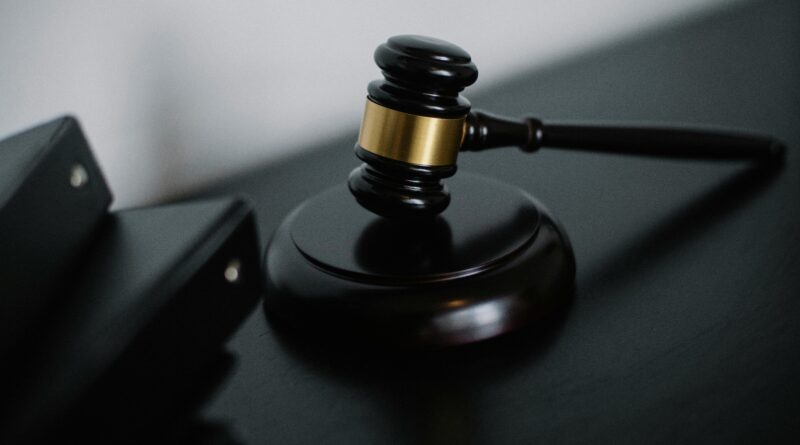How Do You Prove Negligence?
Tort law allows plaintiffs, or victims, to recover damages proximately caused by someone else’s negligence. That’s a fancy way of saying that someone else’s wrongful actions that lead to injuries allow compensation for those injuries. But how exactly do you prove negligence in a court of law? And how can you maximize your chances of winning your claim?
The Short Answer: With a Lawyer
Hiring a personal injury lawyer is going to be the most important step you take in this process. Once you have a personal injury lawyer, they’re going to help you understand the legal process, investigate the nature of your accident and claim, gather evidence, negotiate a settlement on your behalf, and even represent you in court if the process gets to that point.
The law is very complicated, and negligence is especially tricky, so you’ll need professional legal representation if you want to represent yourself effectively. Your lawyer will work with you to gather and present all the evidence necessary to prove negligence in your case; just be sure to listen carefully to their instructions and follow them as precisely as possible.
The Elements of Negligence
If you want to prove negligence, you need to be able to separately prove four distinct elements. These elements can be proven in a variety of ways, often incorporating physical evidence, eyewitness testimony, and other types of evidence, but also logical reasoning and legal interpretation.
- Duty. To establish negligence, you must first establish that the defendant owed a duty of care to the plaintiff. This is typically easy to prove, as by default, we all owe a duty of reasonable care to each other with respect to bodily and property integrity. There are some circumstances where this duty is waived, such as if you voluntarily participate in an activity that’s inherently risky, but for the most part, you can take this as a given.
- Breach of duty. Next, the defendant must have breached that duty. In other words, you have to show that the defendant did not act with reasonable care in a given situation. This is very vague, subjective language, so this is a trickier element to prove. Sometimes, lawyers incorporate something called the Learned Hand formula (named after the famous judge) to estimate whether an action was reasonable.
In this formula, a breach of duty occurs if the burden of a careful action is less than the probability of damage and the gravity of the loss, considered together, and if the defendant did not take that action. As a simple example, texting while driving builds this test; it’s a very minimal sacrifice to avoid texting for a short duration, especially when the probability of an accident is so high and when the gravity of an accident is extreme. This isn’t a perfect system, but it’s a decent set of guidelines.
- Damages. You must show damages. If you’re seeking legal help, this probably isn’t an issue. But you’ll need to show damage to your body, mental well-being, or property if you want to move forward.
- A causal link. Finally, you’ll need to demonstrate causation. You need to prove a causal link between the defendant’s breach of duty and the damages you suffered, demonstrating both actual cause and proximate cause in the process. The simplest way to do this is to show that the accident, and therefore the damage, wouldn’t have occurred if it wasn’t for the defendant’s conduct and show that the damages were reasonably foreseeable by the defendant. This isn’t as easy to do as it sounds, as contributory negligence, intervening causes, and other complications can throw a wrench in things.
Additional Considerations
There are some additional considerations you’ll need to bear in mind when attempting to prove negligence:
- Your actions before the accident. Your actions before and during the accident are going to enter into the equation. The defendant may have been acting negligently in a way that approximately and actually caused your injuries, but if you implicitly assumed risk or if you were acting negligently as well, it can complicate your legal position.
- Your actions after the accident. Plaintiffs are responsible for taking reasonable steps to secure their own treatment and recovery. Accordingly, it’s important for you to seek medical attention immediately following your accident. If you don’t seek that immediate medical treatment, or if you don’t follow your doctor’s advice, some of your injuries may not be compensable.
- The weight of the evidence. In cases with ambiguous or conflicting evidence, it’s important to have a preponderance of the evidence in your favor. Hopefully, you’ve seen that many of the elements of negligence are complicated and difficult to prove. They’re even more difficult to prove if the defendant has evidence that contradicts yours. Ultimately, a judge or jury may have to decide the version of events that the total collection of evidence favors.
- Settlement negotiations. As most negligence cases settle out of court, you may not have to objectively prove that negligence occurred. Instead, you merely have to demonstrate that it’s in the defendant’s best interests to settle for a certain amount.
If you’ve suffered damages as a result of someone else’s negligent actions, it’s a good idea to call a lawyer for an initial consultation. Typically, this initial consultation is free, so there’s no downside or risk; it’s an opportunity to determine whether it makes sense to move forward with legal action.
I’m a single mother of 2 living in Utah writing about startups, business, marketing, entrepreneurship, and health. I also write for Inc, Score, Manta, and Newsblaze

